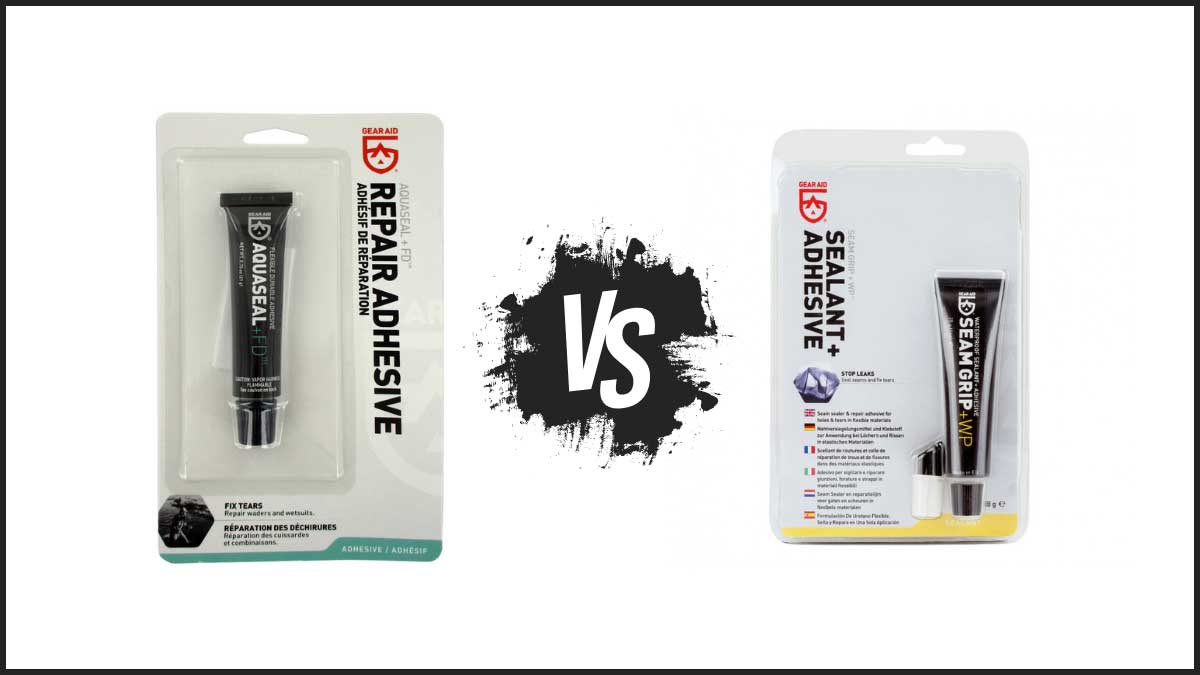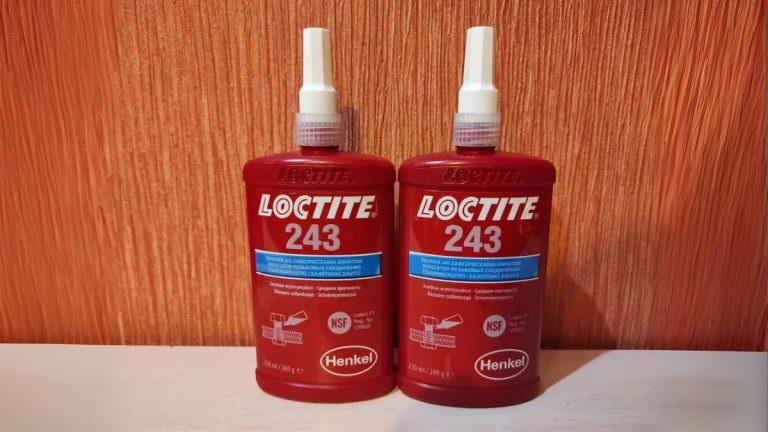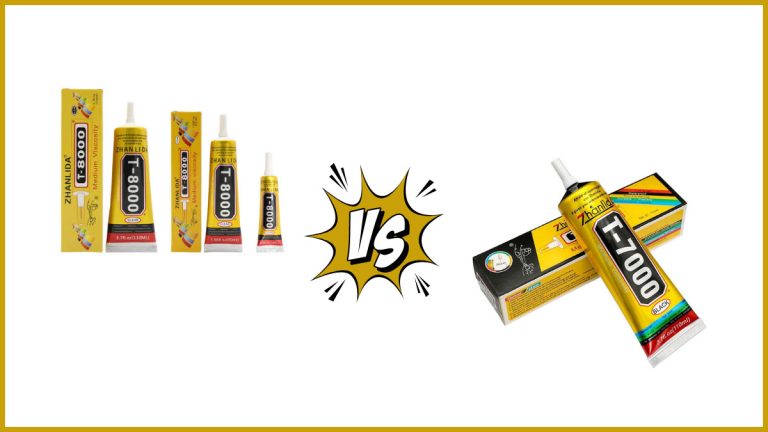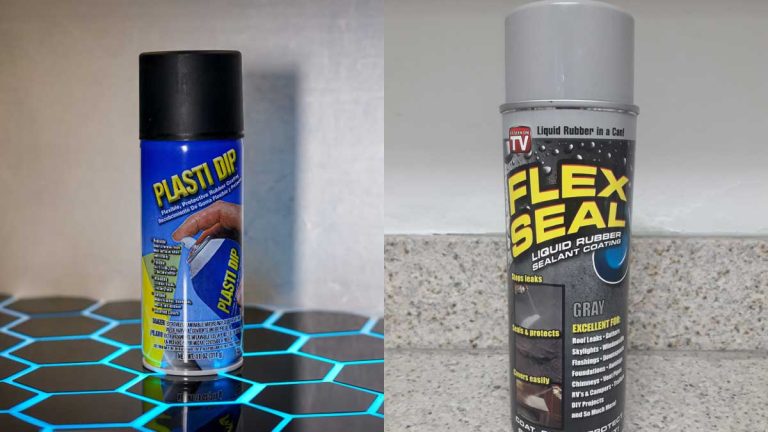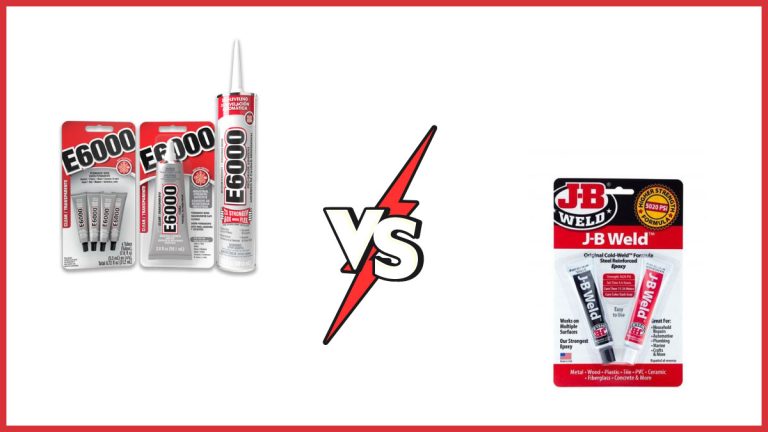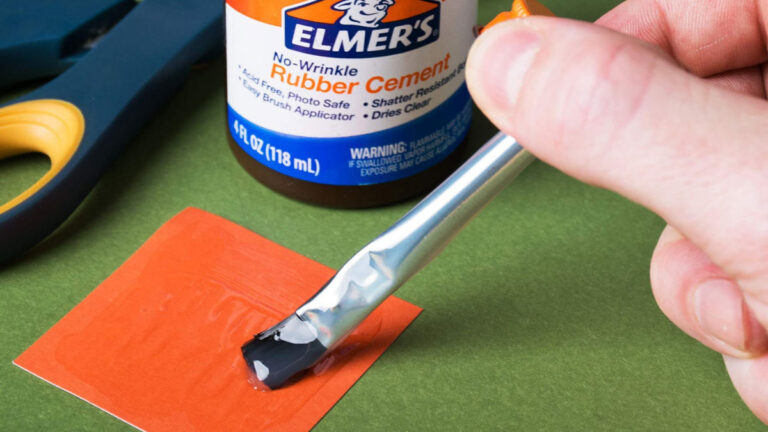Seam Grip vs Aquaseal: Choosing the Right Adhesive for Gear Repair
When you’re out in the wild, the last thing you want is for your gear to fail. Whether you’re patching up a tent, fixing a leaky wader, or repairing your favorite jacket, choosing the right adhesive is crucial. Enter Seam Grip and Aquaseal, two of the most trusted names in outdoor gear repair.
But which one should you choose? Seam Grip and Aquaseal each have their unique strengths and applications. Understanding the differences can save you time and ensure your gear stands up to the elements. Let’s jump into what makes each product tick and how to decide which is best for your needs.
Key Takeaways
- Formulation Differences: Seam Grip has a thinner viscosity suitable for seam sealing, while Aquaseal is thicker, better for durable fabric bonding and heavy-duty repairs.
- Primary Uses: Seam Grip is ideal for tents, tarps, and minor repairs, whereas Aquaseal excels in robust repairs for items like wetsuits and high-wear areas.
- Application Methods: Seam Grip is easily applied with a brush, perfect for precision. Aquaseal requires a spatula and needs to be applied on both surfaces for a strong bond.
- Curing Times: Seam Grip has a shorter curing time of 8-12 hours, making it suitable for quick fixes. Aquaseal takes about 24 hours to fully cure, providing stronger, long-lasting repairs.
- Durability and Flexibility: Seam Grip offers excellent waterproofing and flexibility for lightweight repairs. Aquaseal provides superior durability and a strong bond for high-stress applications.
Seam Grip Vs Aquaseal
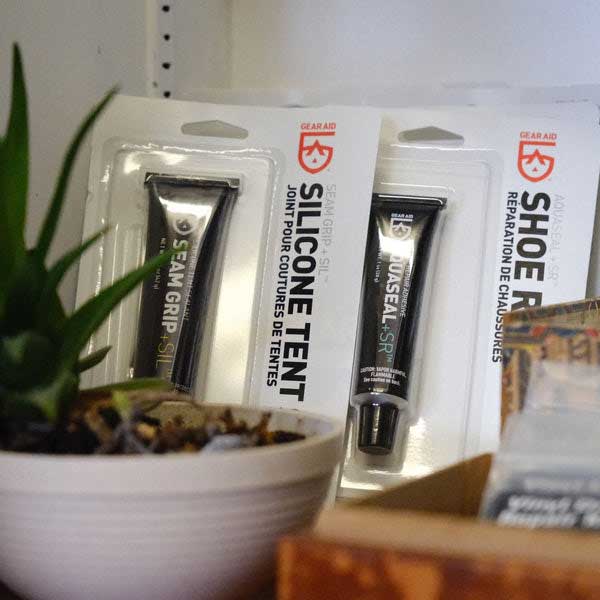
Key Differences
Seam Grip and Aquaseal are urethane-based adhesives from Gear Aid, yet they have distinct formulations and applications suited for different purposes in outdoor gear maintenance.
Formulation
- Seam Grip: A urethane-based adhesive, known for its superior waterproofing, is thinner for easier seam application.
- Aquaseal: Another urethane-based adhesive, but thicker, making it ideal for permanent repairs and fabric bonding where heat sealing isn’t viable.
Application
- Seam Grip: Useful for sealing seams, particularly on tents, tarps, and other gear needing a thinner application. It includes a brush applicator for precision.
- Aquaseal: Suited for permanent repairs, installing valves, and gluing fabric. It demands a longer curing time and is generally applied to both surfaces before pressing together.
Comparison Table
| Criteria | Seam Grip | Aquaseal |
|---|---|---|
| Formulation | Urethane-based, thin | Urethane-based, thick |
| Primary Use | Sealing seams (e.g., tents, tarps) | Permanent repairs, fabric bonding |
| Application Ease | Easy, with brush applicator | Required on both surfaces before pressing |
| Curing Time | Shorter curing time | Longer curing time |
Action Point
Determine your specific repair needs—seam sealing or robust repairs—before choosing between Seam Grip and Aquaseal for optimal results.
Understanding The Basics
Selecting the right adhesive is crucial for outdoor gear repairs, and Seam Grip and Aquaseal are two notable options. Understanding their unique properties and applications can help you make informed decisions to maintain your gear’s functionality.
What Is Seam Grip?
Seam Grip is a versatile urethane-based seam sealer and repair adhesive. It’s thinner than Aquaseal, allowing easy application with an included brush. This product offers exceptional waterproofing, superb adhesion, flexibility, and abrasion resistance with minimal shrinkage. Seam Grip is perfect for:
- Seam Sealing: Ensures water-tight seams in tents and tarps.
- Small Repairs: Fixes minor tears and holes in sleeping pads, backpacks, and outerwear.
Key Features:
- Formulation: Urethane-based
- Viscosity: Thinner
- Applications: Tents, tarps, sleeping pads, backpacks, outerwear
- Benefits: Waterproofing, adhesion, flexibility, abrasion resistance
What Is Aquaseal?
Aquaseal is a thicker, urethane-based repair adhesive designed for more durable and permanent repairs. It’s ideal for situations where the bond needs to withstand rigorous use and cannot be broken down easily by solvents:
- Heavy-Duty Repairs: Suitable for repairing wetsuits, drysuits, and heavy fabrics due to its robustness.
Key Features:
- Formulation: Urethane-based
- Viscosity: Thicker
- Applications: Wetsuits, drysuits, heavy fabrics
- Benefits: Durability, permanent bonding
| Feature | Seam Grip | Aquaseal |
|---|---|---|
| Formulation | Urethane-based | Urethane-based |
| Viscosity | Thinner | Thicker |
| Uses | Tents, tarps, outerwear | Wetsuits, drysuits |
| Benefits | Waterproofing, flexible | Durable, permanent bond |
Selecting between Seam Grip and Aquaseal depends on your repair needs. Seam Grip excels in flexibility and ease of application, while Aquaseal stands out for its durability and strong bonding capabilities. Familiarize yourself with these properties to ensure effective and long-lasting repairs for your outdoor gear.
Key Differences
Choosing the right adhesive for your outdoor gear repairs is crucial for ensuring durability and functionality. Seam Grip and Aquaseal are both trusted options, each catering to different needs.
Viscosity
Seam Grip: This adhesive has a thinner consistency. It’s easier to apply with a brush, making it ideal for seam sealing and small repairs.
Aquaseal: With a thicker consistency, Aquaseal suits applications requiring superior flexibility and strength, such as wetsuit repairs.
Formulation
Seam Grip and Aquaseal are both urethane-based adhesives. Even though this, they differ in viscosity and specific application purposes.
Usage
Seam Grip:
- Primarily used for seam sealing, waterproofing outerwear, tents, and repairing small tears and holes.
Aquaseal:
- Best for robust repairs, such as wetsuits, dry suits, waders, and high-wear areas.
Application Methods
Seam Grip:
- Apply Seam Grip using the included brush, which allows for precise application along seams and small areas.
Aquaseal:
- Use a spatula or similar tool for application, ideal for spreading across larger surfaces and ensuring strong bonds.
Drying Time
Seam Grip:
- Cures in approximately 8 to 12 hours. Suitable for minor repairs that require quick turnaround times.
Aquaseal:
- Requires a longer curing time of about 24 hours, often necessary for more substantial repairs where stronger bonds are essential.
Durability And Flexibility
Seam Grip:
- Provides excellent waterproofing and flexibility. Ideal for lightweight and versatile repairs on tents, tarps, and outerwear.
Aquaseal:
- Known for its superior durability and strong bonding capabilities. Perfect for heavy-duty items like wetsuits and dry suits, offering extended longevity even in harsh conditions.
| Feature | Seam Grip | Aquaseal |
|---|---|---|
| Viscosity | Thinner, easier for brush application | Thicker, better for spreading on large areas |
| Formulation | Urethane-based, thinner | Urethane-based, thicker |
| Usage | Seam sealing, waterproofing, minor repairs | Robust repairs, high-wear areas |
| Application | Brush included, precise application | Spatula or similar tool, strong bonding |
| Drying Time | 8-12 hours | 24 hours |
| Durability | Excellent waterproofing and flexibility | Superior durability and strong bonds |
Understanding these differences helps you choose the right product to ensure effective and long-lasting repairs for your outdoor gear.
Use Cases
Choosing the right adhesive can make all the difference in repairing your outdoor gear. Understanding how Seam Grip and Aquaseal excel in their respective applications will help you maximize their benefits.
Best Uses For Seam Grip
Seam Sealing
Seam Grip is ideal for waterproofing seams in tents, tarps, sleeping pads, backpacks, and outerwear. Its thin consistency ensures smooth application.
Repairing Small Holes and Tears
Perfect for mending small rips, tears, and holes in various materials, Seam Grip remains flexible and durable after curing.
Abrasion Resistance
Areas exposed to wear and tear benefit from Seam Grip’s long-lasting flexibility and minimal shrinkage. It protects and reinforces to prevent further damage.
Key Characteristics
- Urethane-Based: Curing polyurethane polymer.
- Viscosity: Thinner than Aquaseal, easier for precision application.
- Compatibility: Works on natural fabrics, leather, vinyl, waterproof laminates, PVC, and synthetic fabrics like polyurethane, nylon, neoprene, and rubber.
Best Uses For Aquaseal
Heavy-Duty Repairs
Aquaseal’s thick consistency makes it ideal for permanent repairs on wetsuits, drysuits, and other heavy-duty items. It provides robust bonding for high-wear areas.
Fabric Bonding
For tasks requiring strong fabric bonding, Aquaseal ensures items stay intact under stress. Apply on both surfaces before pressing them together.
Prolonged Curing Time
While Aquaseal requires approximately 24 hours to cure, this extended curing time enhances its durability and strength.
Key Characteristics
- Urethane-Based: Also a polyurethane polymer, offering solid and long-lasting adhesive properties.
- Viscosity: Thicker than Seam Grip, suitable for large, demanding repairs.
- Compatibility: Effective on neoprene, rubber, vinyl, and other synthetic fabrics that face high-stress conditions.
| Feature | Seam Grip | Aquaseal |
|---|---|---|
| Consistency | Thinner, easy for small areas | Thicker, ideal for heavy-duty tasks |
| Best For | Seam sealing, small rips, abrasion | Fabric bonding, permanent repairs |
| Curing Time | 8-12 hours | 24 hours |
| Compatibility | Natural fabrics, leather, synthetic fabrics | Neoprene, rubber, vinyl |
| Durability | High flexibility, minimal shrinkage | Strong bonding, high wear resistance |
Choosing between Seam Grip and Aquaseal depends on your specific repair needs. Seam Grip excels in flexibility and precision, making it ideal for lightweight, flexible repairs. Aquaseal stands out for its robustness, perfect for heavy-duty, high-stress areas. Ensure the best care for your gear by selecting the adhesive that aligns with your repair requirements.
Tips For Application
Preparation Steps
Proper preparation is crucial when applying Seam Grip or Aquaseal to ensure a strong bond and long-lasting repair. Follow these steps to get the best results:
- Clean the Area: Make sure the surface is clean and dry. Use isopropyl alcohol to remove any dirt, oil, or residue.
- Roughen the Surface: Lightly sand or roughen smooth surfaces for better adhesion.
- Protect Surrounding Areas: Use tape or masks to prevent adhesive from spreading to unwanted areas.
- Read Manufacturer Instructions: Review the product instructions to ensure proper application techniques and curing times.
Common Mistakes To Avoid
Avoid these common mistakes when using Seam Grip or Aquaseal to ensure effective repairs:
- Skipping Surface Preparation: Not cleaning or roughening the area can lead to poor adhesion and premature failure.
- Applying Too Much Adhesive: Over-application can result in messiness and extended curing times.
- Ignoring Curing Time: Rushing the curing process can compromise the bond’s strength and durability.
- Inconsistent Application: Uneven application can cause weak spots and reduce overall effectiveness.
Adhering to these tips ensures that your repairs are durable and effective, keeping your gear in top condition for your outdoor adventures.
Conclusion
Choosing the right adhesive for your outdoor gear repairs can significantly impact the longevity and performance of your equipment. Seam Grip and Aquaseal, both from Gear Aid, offer unique benefits tailored to different repair needs. Seam Grip’s thinner consistency and precision application make it perfect for seam sealing and minor repairs, while Aquaseal’s thicker formulation is ideal for heavy-duty repairs and strong fabric bonding.
Understanding the specific characteristics and best use cases for each adhesive ensures you make an well-informed choice. By following proper application techniques and avoiding common mistakes, you can achieve durable and effective repairs. Whether you’re sealing tent seams or fixing a wetsuit, the right adhesive will keep your gear in top condition for all your outdoor adventures.
Frequently Asked Questions
What is Seam Grip used for?
Seam Grip is a urethane-based adhesive ideal for sealing seams on tents, tarps, and other outdoor gear. It offers excellent waterproofing, flexibility, and abrasion resistance, making it suitable for minor repairs on items such as sleeping pads, backpacks, and outerwear.
How long does Seam Grip take to cure?
Seam Grip typically cures in approximately 8 to 12 hours. This shorter curing time allows for quick but durable repairs on your outdoor gear.
What are the best use cases for Aquaseal?
Aquaseal is best suited for heavy-duty repairs and strong fabric bonding. It’s ideal for fixing high-wear items like wetsuits, drysuits, and other gear requiring a durable and permanent solution.
Is Aquaseal thicker than Seam Grip?
Yes, Aquaseal has a thicker formulation compared to Seam Grip. This makes it more appropriate for robust repairs, where a stronger bond is needed.
Can Seam Grip be used on various materials?
Yes, Seam Grip works on all types of fabrics, including nylon, vinyl, neoprene, PVC, rubber, and leather. Its versatility makes it a go-to option for multiple outdoor gear repair needs.
How long does Aquaseal take to cure?
Aquaseal requires a curing time of about 24 hours. This longer curing period ensures a strong and durable bond suitable for heavy-duty repairs.
Why is seam sealer important?
Seam sealer keeps moisture, dust, and dirt from penetrating areas where two materials meet. This helps protect your gear’s integrity and longevity, especially during outdoor adventures.
How should I prepare my gear for adhesive application?
Preparation steps include cleaning the area, roughening smooth surfaces, protecting surrounding areas, and reading the manufacturer’s instructions. Proper preparation ensures strong bonds and durable repairs.
What mistakes should I avoid when using adhesives like Seam Grip or Aquaseal?
Common mistakes include skipping surface preparation, over-applying adhesive, ignoring curing times, and applying the adhesive inconsistently. Avoiding these errors can significantly enhance the effectiveness of your repairs.
How long does Aquaseal last in its container?
Gear Aid states that the shelf life of Aquaseal is 4 years for unopened containers and about 1 year for opened ones. Proper storage can help maintain its effectiveness for future use.

